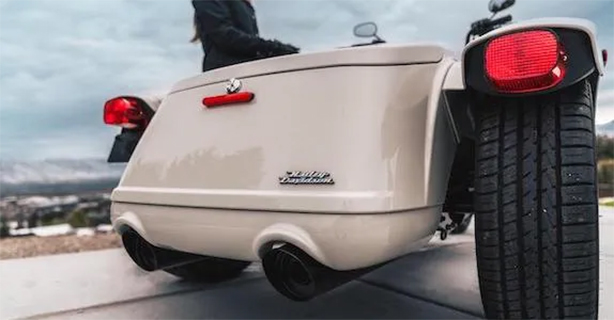AUTOCYCLE INSURANCE GUIDE: HOW TO COVER A 3-WHEELED AUTOCYCLE
Do you want to enjoy the feeling of the wind in your hair without having to get a motorcycle endorsement on your license?
Do you want to stand out in a crowd but keep the road firmly beneath your wheels, with no lean necessary?
The autocycle might be the vehicle for you.
WHAT IS AN AUTOCYCLE?
An autocycle is a type of three-wheeled vehicle typically classified as a motorcycle in the United States.
This on-the-nose portmanteau (a combination of automobile and motorcycle) describes the three-wheeled vehicle to a T. By its very nature, an autocycle is a hybrid vehicle that legally fits into an in-between category.
It typically has a steering wheel, foot pedals, and seat belts, similar to a car, but also has features of a motorcycle, such as handlebars and a motorcycle-style powertrain.
Some states have specific regulations for autocycles, and in some states, a motorcycle license is required to operate one.
AUTOCYCLE INSURANCE REGULATIONS
The hybrid nature means that there are very different regulations in every state, so it's essential to do the research for your state on what you will need to ride legally.
Some states require you to carry a motorcycle license and a motorcycle insurance policy, while others treat them (especially enclosed autocycles) like cars and require only a driver's license and auto insurance.
AUTOCYCLE INSURANCE REQUIREMENTS & COVERAGE
Insurance requirements will vary depending on your state and the type of autocycle you have.
Open-air vehicles live in an in-between space (who doesn't love a convertible). Still, open-air autocycles most often require motorcycle training, a standard motorcycle endorsement on your license, and regular motorcycle insurance coverage.
Refer to your state motorcycle operator handbook for more information.
Enclosed autocycles are often treated like cars, follow typical motor vehicle safety regulations, and need an auto insurance policy despite only having three wheels.
THE BEST AUTOCYCLE COVERAGE
The best autocycle coverage is the coverage that works for your state and ride. We've got you covered if you need a motorcycle insurance guide.
Like auto insurance policies, motorcycle policies are made up of several unique coverages. Your coverage limits are one factor in determining how much your monthly or annual payment is—the more coverage, the more your bill typically.
But the more coverage you purchase, the more financial protection you have in the case of an unforeseen mishap.
Liability Insurance
As a motorcycle owner, you are required in most states to carry liability insurance. This liability coverage provides protection for injuries or damages caused to a third-party dependent on coverage limits.
Medical Payments Coverage
This coverage can help with the medical expense resulting from an accident. This form of insurance can help with medical bills but will depend on the circumstances of the insurance incident and your coverage limits.
Collision Coverage
This coverage is not required but can provide protection to pay costs of damage to your bike in the case of a mishap involving colliding with a foreign object.
Comprehensive Coverage
Policies with Comprehensive coverage offer protection for your motorcycle.
This may include non-collision related damages to your motorcycle, such as theft, fire, weather damage, and other incidents not involving collision with another vehicle.
We recommend that most riders carry Comprehensive coverage, but every rider is different.
Additional Coverage
Additional coverages exist and, for some riders, are the key to ensuring financial health in case of an unforeseen accident.
Some choose to cover their gear or custom parts and provide guest passenger liability coverage, among many other things. These additional coverages will raise the cost of motorcycle insurance but will round out most motorcycle policies.
BOTTOM LINE ON AUTOCYCLE INSURANCE COVERAGE
We believe that cheap motorcycle coverage does not mean it's good or even an acceptable level of coverage, despite being legally compliant.
Luckily for many riders, some discounts can make motorcycle insurance cheaper.
At Harley-Davidson Insurance Services, we provide discounts for military, multi-bike policies, new bikes, homeowners, prompt payments, and more!
Reach out to one of our agents today for a free quote for your autocycle.

